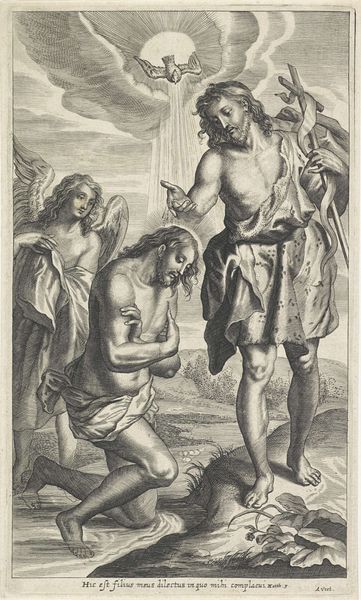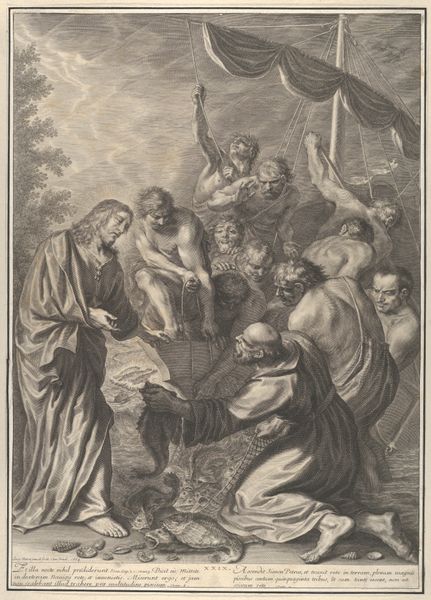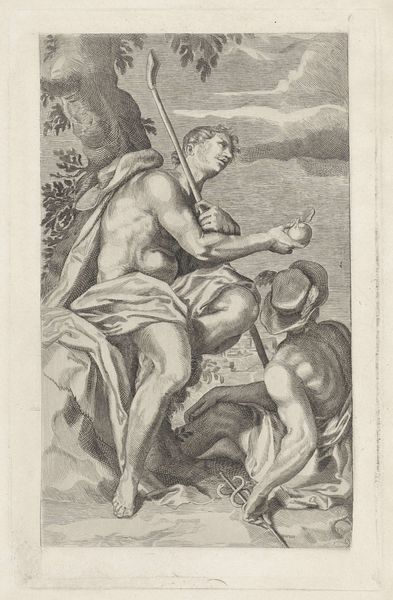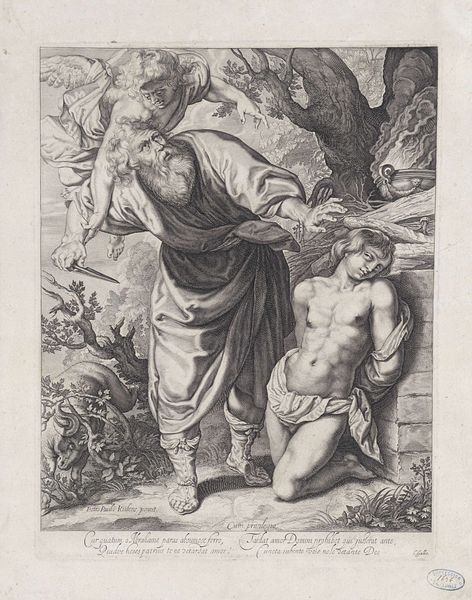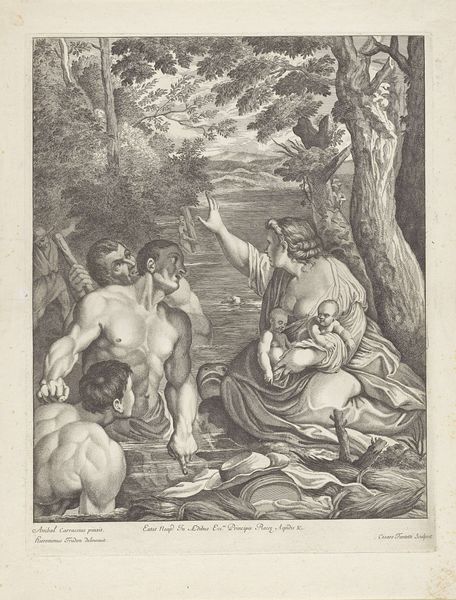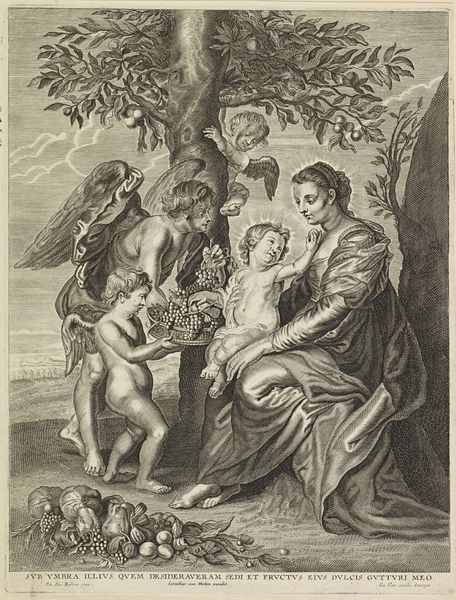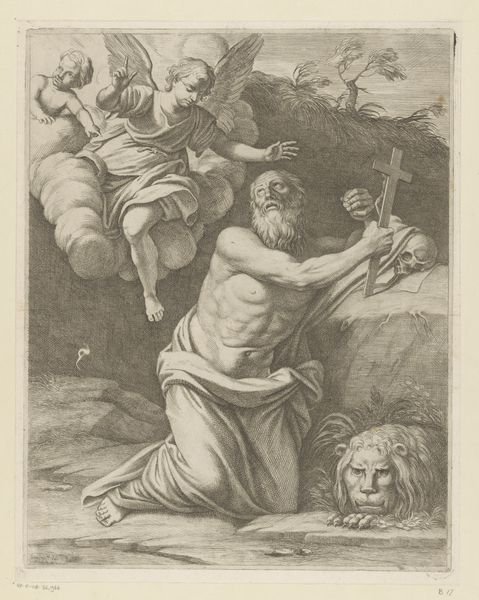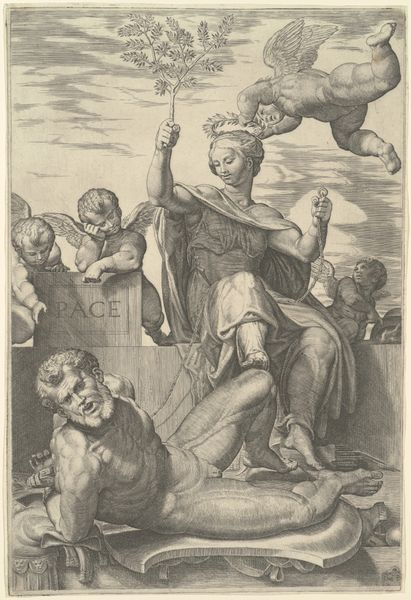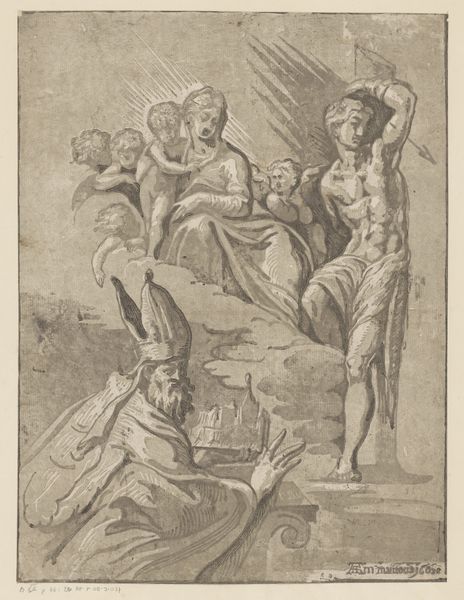
print, engraving
#
allegory
#
baroque
# print
#
figuration
#
line
#
history-painting
#
engraving
Dimensions: height 405 mm, width 264 mm
Copyright: Rijks Museum: Open Domain
Curator: This engraving, titled "Baptism of Christ", is the work of Nicolas de Poilly, and dates from the period 1644 to 1696. You can find it here at the Rijksmuseum. Editor: Immediately, I see a scene full of grace. A calmness that juxtaposes sharply with the high drama usually accompanying baroque art. Curator: Yes, its part of a whole Baroque artistic wave. Look closely, and you'll notice its commitment to line work, how everything, even the background, is carefully delineated and structured. There’s an angel subtly integrated into the scene, witnessing the event. It is very subtle but that's typical for baroque, hiding allegorical figures into every day looking scene. Editor: Exactly! And the dove above, the source of divine light illuminating Christ - it's beautifully rendered. It guides our eyes down to the rest of the scenery, what a clever element! What I really appreciate about de Poilly’s technique is the lack of darkness for a baptism setting – a scene often played in semi darkness, but de Poilly introduces the baptism of Christ into a clear day in nature with a complete set of baroque linear style guidelines Curator: Absolutely, and note how the composition guides our eyes – it's almost theatrical, wouldn't you say? Everything directs our focus to Christ's baptism. But you have to admit, de Poilly’s composition here makes the most sense: The human Christ with its almost exaggerated musculature being baptized by St. John himself: Editor: You’re right; de Poilly really captured a moment of divine transition and historical narrative while keeping true to that rigorous visual vocabulary. The balance is very strong within this figuration setting! It does leave you pondering on both the visuality and depth the piece offers; all under the allegorical and theatrical framework of Baroque's charm! Curator: I couldn’t agree more; It's a dance between the divine and human elements, all set within the Baroque idiom of line and detail. Editor: So, its safe to say: quite the spectacle for its time.
Comments
No comments
Be the first to comment and join the conversation on the ultimate creative platform.
